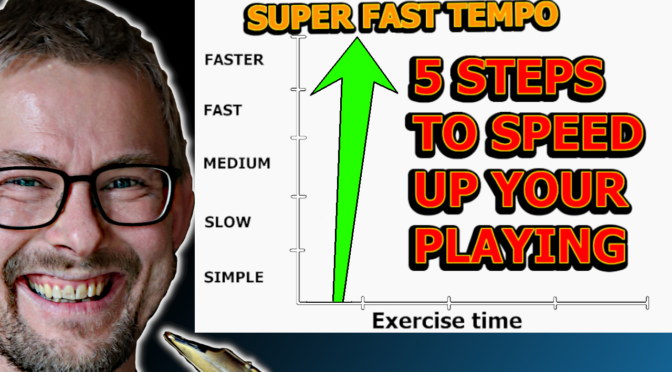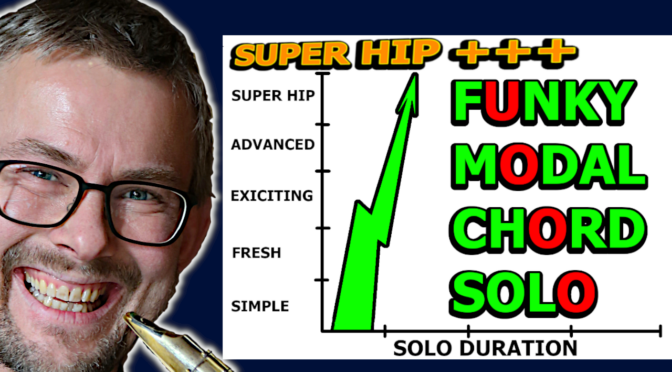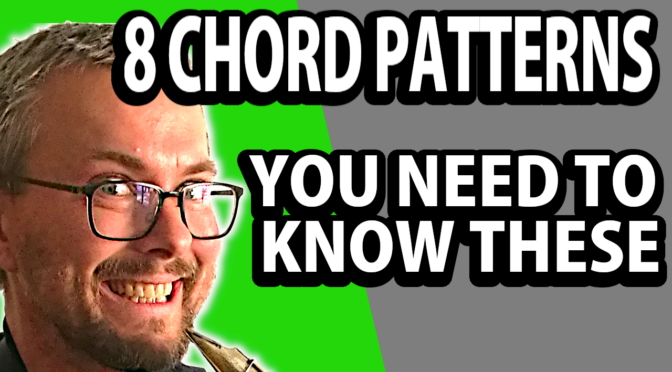Solo Preparation in 6.35 simple steps
This video is about how to prepare for a solo you play in a band, with a play along, and or in some way performing in front of an audience.
Maybe your first solo or a solo when you are beginning to play solos.
What do you need to prepare and what you absolutely do not need to prepare.
Taking you through all steps on the way there!
In this tutorial
00:00 Solo Preparation in 6.35 simple steps
00:46 What actually happens in real life
02:19 What do and do you not need to prepare
03:28 Thank you Chad
04:04 Remember these things to the gig
04:48 How do you prepare the music?
09:23 Examples on a simple tune – Cantaloupe Island
12:54 Do not do this!!!!
14:01 Do you like my videos – support me on Patreon
https://www.patreon.com/posts/57391444
Get the free E-book material on saxophone practice – sign up for my newsletter: https://bit.ly/subscribetomynewslettersorenballegaardsaxophonelessons
Video links:
The best way how to visualize and silent practice saxophone
https://youtu.be/Y-X-mrTJpd4
https://www.patreon.com/posts/43569123
https://sorenballegaard.dk/product/the-best-way-how-to-visualize-and-silent-practise-saxophone/
8 chord pattern you need to know
https://youtu.be/oWV2LtH7GEw
https://www.patreon.com/posts/41196433
https://sorenballegaard.dk/product/8-chord-patterns-you-need-to-know-these/
4 Scale exercises you must know these
https://www.youtube.com/watch?v=jH4BE08wJY4&t=30s
https://www.patreon.com/posts/34302773
https://sorenballegaard.dk/product/full-lesson-transcription-4-scale-exercises-you-must-know-8-step-guide-how-to-speed-up-your-technique/
CHAD LB WARMING UP EXERCISES
Cantaloupe Island – Chris Potter
https://youtu.be/PEaWi0pdlFM
Get more value from the Youtube lessons by supporting me:
https://www.patreon.com/sorenballegaa…
Get the free E-book material on saxophone practice – sign up for my newsletter:
https://mailchi.mp/cc449eb965d2/soren…
Contact me for video exchange lessons or live online lessons
www.sorenballegaard.dk
Lesson tutorials and live online lessons – check my shop:
https://sorenballegaard.dk/shop
“60 scale patterns on functional harmony + 20 II-V-I licks using scale patterns”
https://sorenballegaard.dk/product/60…
Subscribe for more free saxophone videos and lessons: https://www.youtube.com/c/SørenBallegaard
Get more value from the Youtube lessons by supporting me:
https://www.patreon.com/sorenballegaardsaxophonelessons
Get the free E-book material on saxophone practice – sign up for my newsletter: https://bit.ly/subscribetomynewslettersorenballegaardsaxophonelessons
Subscribe for more free saxophone videos and lessons: https://www.youtube.com/c/SørenBallegaard
Lesson tutorials and live online lessons – check my shop:
https://sorenballegaard.dk/shop
Contact me for video exchange lessons or live online lessons
https://sorenballegaard.dk/saxophonelessons/
Facebook: https://www.facebook.com/groups/sorenballegaardsaxophonelessons
Instagram: https://www.instagram.com/sorenballegaard
Website: https://sorenballegaard.dk
Twitter: https://twitter.com/SorenBallegaard
My setup:
Video camera: https://amzn.to/2S7hrUv
Web-cam: https://amzn.to/3cf71cb
Music notation software – https://amzn.to/3gHW1ag
2x computer monitor – https://amzn.to/3gIclIm
Mini keyboard for music notation – https://amzn.to/3sVufcWTenor saxophone: Selmer MKVI 82xxx
Mouthpiece is an old Otto Link Babbit – refaced from opening 6 to opening 8/8,5
Alto – The Martin Alto
Soprano – Yanagisawa Elimona
Tenor reeds – https://amzn.to/2Qrk8zz
Alto reeds –https://amzn.to/2Pwv8Lu
Soprano reeds – https://amzn.to/3vnHfJS
Saxophone strap – https://amzn.to/3sV20Lt
Alto mouthpiece – https://amzn.to/3sZvdF0
Soprano mouthpiece – https://amzn.to/2R6mvI0
Alto Ligature – https://amzn.to/3xvCn7E
Tenor Saxophone Case – https://amzn.to/32SD1xG
Alto Saxophone Case – https://amzn.to/3aIqxgu










